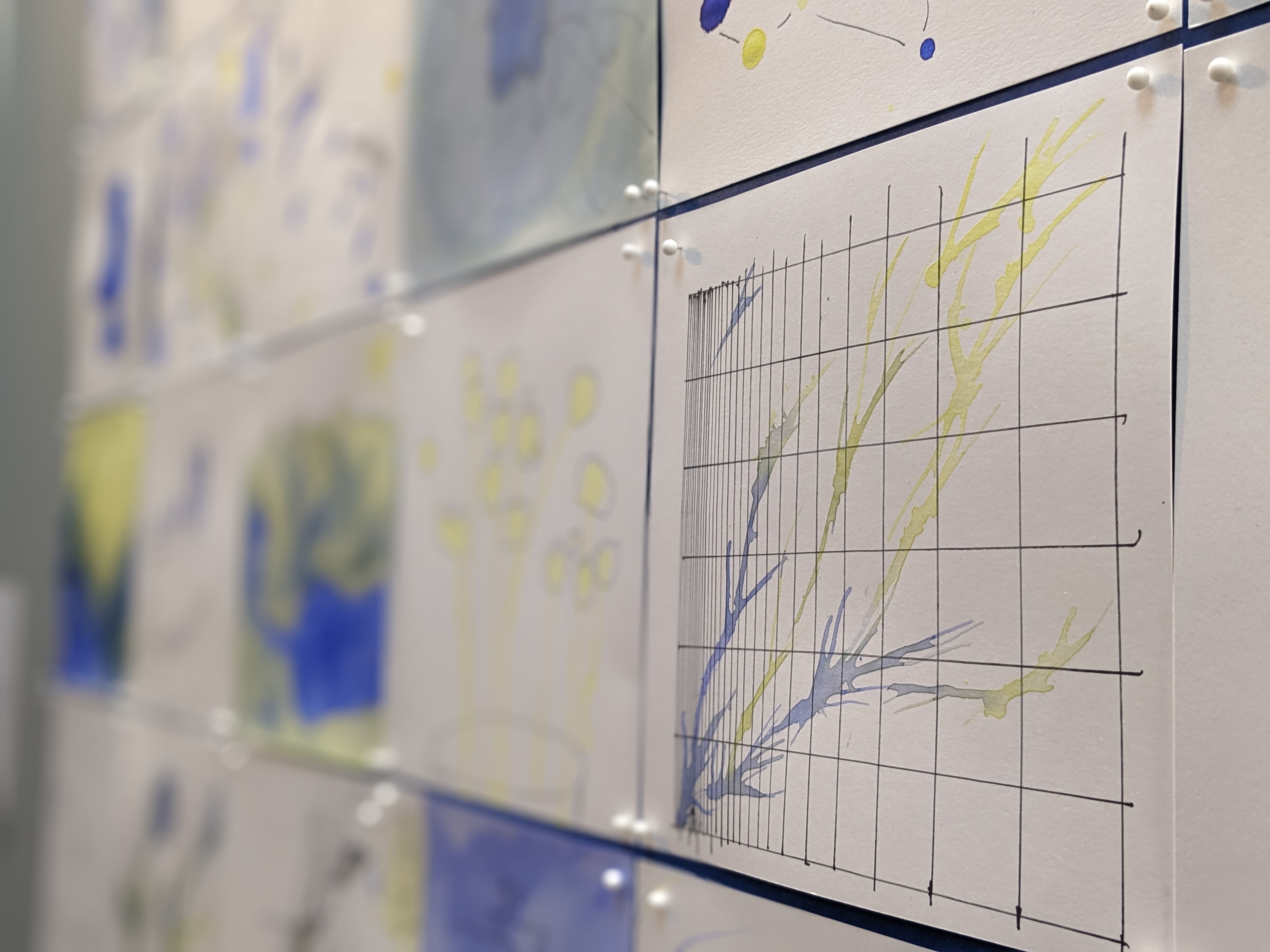
By Ronica Stromberg
The EPSCoR project Jessica Corman leads really picked up STEAM by incorporating art.
After seeing results from the first year of the project, the National Science Foundation quadrupled the art funds.
Originally, the team had proposed compiling data on aquatic ecosystems like lakes, streams and wetlands and their chemistry. The data could concern carbon, nitrogen and phosphorous in the water, bugs, plants and algae to gauge water quality and safety for drinking and wildlife. Corman had also proposed that a portion of the RII Track-2 award go toward work with an artist.
She said the "Art, Data, and Environments" portion of the award had the objectives to think more broadly about the data being generated and more inclusively about who would benefit from it. Katie Anania, a professor of art history, helped the scientists meet these objectives.
"The first step that she did was to have us have conversations thinking outside of our very familiar X-Y plots to think more broadly about how we could communicate data," Corman said.
The group met at the Sheldon Museum of Art and viewed paintings and photographs of landscapes and Native American symbolism of the seasons and changes through time. They discussed how these artists represented environmental data.
"As soon as we introduced art activities at the Sheldon Museum into the grant, everyone on the project–from the PIs to the graduate trainees–started to look a little more closely at how they used visual material in their work," Anania said.
She led workshops where the scientists looked at figures they had already published or hoped to publish to help communicate their data. Participants dug deeper into a figure meant to communicate changes in insect communities from before and after a hurricane in Puerto Rico. The team came up with a figure resembling a beaded bracelet and inspired by Aztec and Mayan Nepōhualtzintzin ways of tracking money or quantities in Central America. The lead on the insect project then presented his data using the figure at conferences. Anania and Cooper Stiglitz, a master’s student in art history, also published an article in Leonardo about their experience developing the figure.
To see a graphic of the bracelet and read more about the project go to https://snr.unl.edu/aboutus/what/newstory.aspx?fid=1146